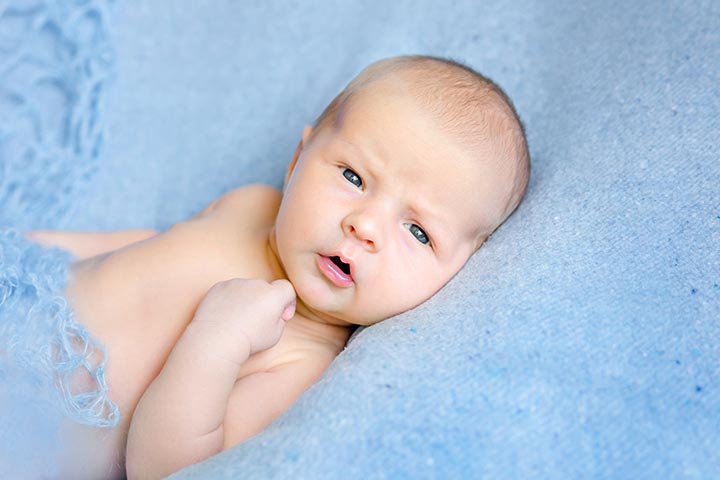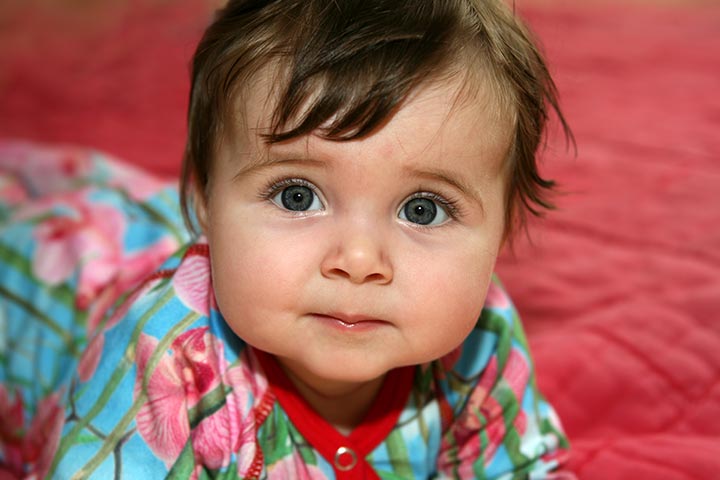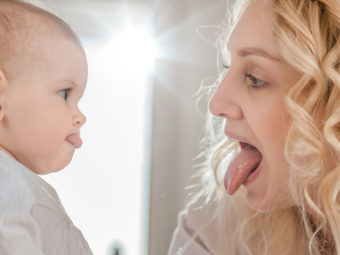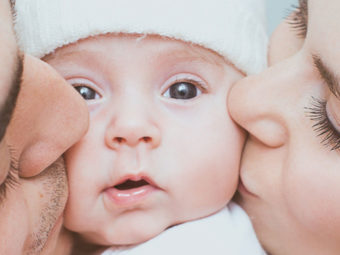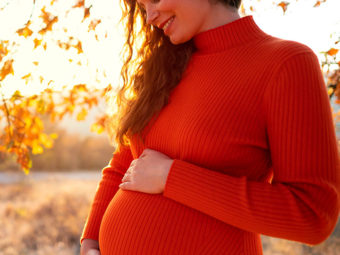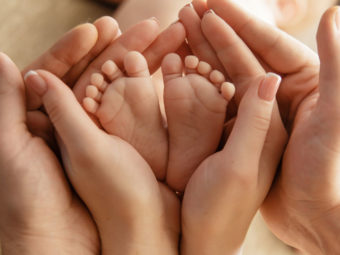
Image: Shutterstock
Parents of newborn babies dote on their little ones. From their tiny fists to their soft little heads, everything becomes an object of adoration in the eyes of a parent. So it is only natural for parents of babies with blue-colored eyes to find their eye color special. Blue-eyed infants seem as if they have come right out of a lovely picture book. But the thing is, their eyes may change in color as and when these infants grow older and more melanin is produced in their body. So, many parents are concerned whether their tiny tot will have the same blue eyes or there will be a change in the eye color as the baby grows older.
Are All Infants Born With Blue Eyes?
Even though several Caucasian infants have grey eyes or blue eyes at birth, this is not the case for babies of other ethnicities. Babies of Asian or Hispanic descent mostly have brown eyes when they are born.
What Is The Scientific Explanation Of Being Born With Blue Eyes?
When we discuss a person’s eye color, what we are actually talking about is the color of the iris and not the entirety of their eye. The amount of melanin present in the iris is responsible for its color. This means that if a baby has darker eyes than another child, there is more melanin present in the former’s eyes. The reason infants are born with blue eyes is that they have very little melanin in the iris of their eyes. Iris consists of three layers, and babies born with brown eyes have melanin present in all of these three layers of the iris.
On the other hand, babies with blue eyes have melanin present only in the back layer of the iris. So when light enters their eyes, most of it is absorbed by the back layer while the light that is remaining is reflected by the middle layer as the color blue. Thus, the baby’s eyes seem blue (1).
The Role Played By Ethnicity And Ancestry
The amount of melanin present is not the only factor that determines the eye color of newborns; ethnicity and genes also have an important role to play in it. If there are people with blue eyes in the infant’s direct or secondary line of heredity, then the chances of the baby having blue-colored eyes at birth are also higher. That is why Caucasian babies have a higher chance of being born with blue eyes as opposed to babies belonging to Asian or Hispanic ethnic groups. Although melanin is the main determinant of having blue-colored eyes, even the amount of melanin produced depends on the genes inherited by the baby. Therefore, the blue eye color is usually present in the family tree of babies born with blue eyes (2).
Predicting The Baby’s Eye Color
Even though a complex genetic history is responsible for determining the eye color of a baby, here are some predictions on whether or not a baby’s eyes will remain blue and the possible reasons for the same (3):
- Most babies with one parent having brown eyes and the other parent having blue eyes will have brown eyes, as the gene with the darker color dominates the color of the eyes.
- If both the parents have blue eyes, then it is most likely that they will give birth to a baby with blue eyes.
- If there is a recessive blue color gene in the heredity line, it can also be so that a blue-eyed infant is born to parents having brown eyes.
- Blue-eyed parents having the ancestry of brown eyes can have a baby with brown-colored eyes.
Because the genetic process controlling an infant’s eye color is so complex, it is difficult to accurately state whether a baby’s blue eye color will remain the same. However, one thing is for sure that regardless of the eye color a baby grows up with, they will always remain special to their parents.

